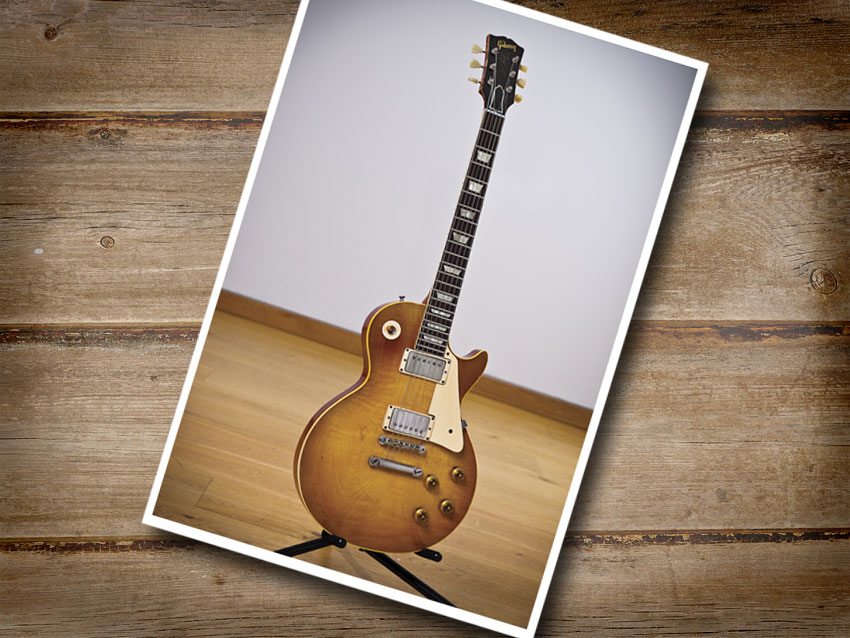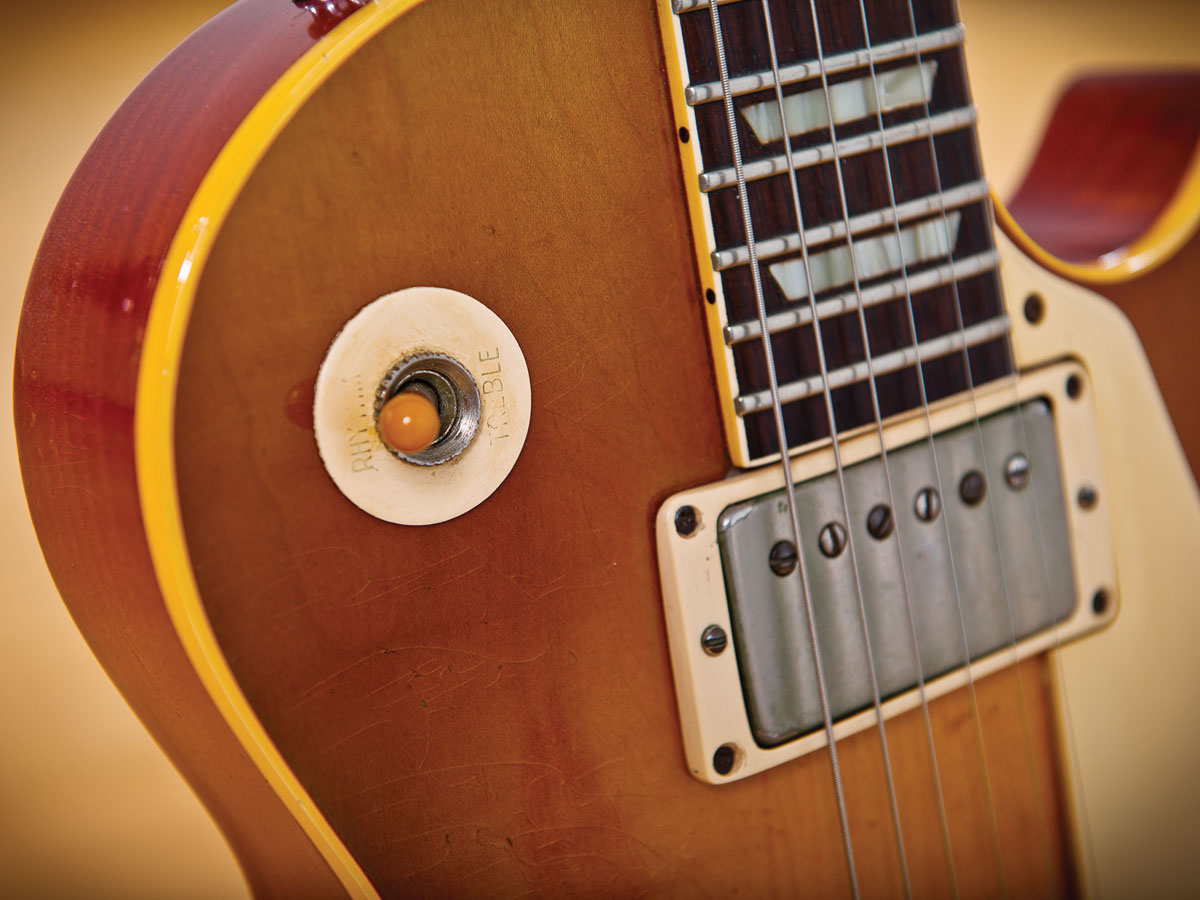Mark Knopfler's go-to guitars for new album Tracker
Close-up with some of the key gear
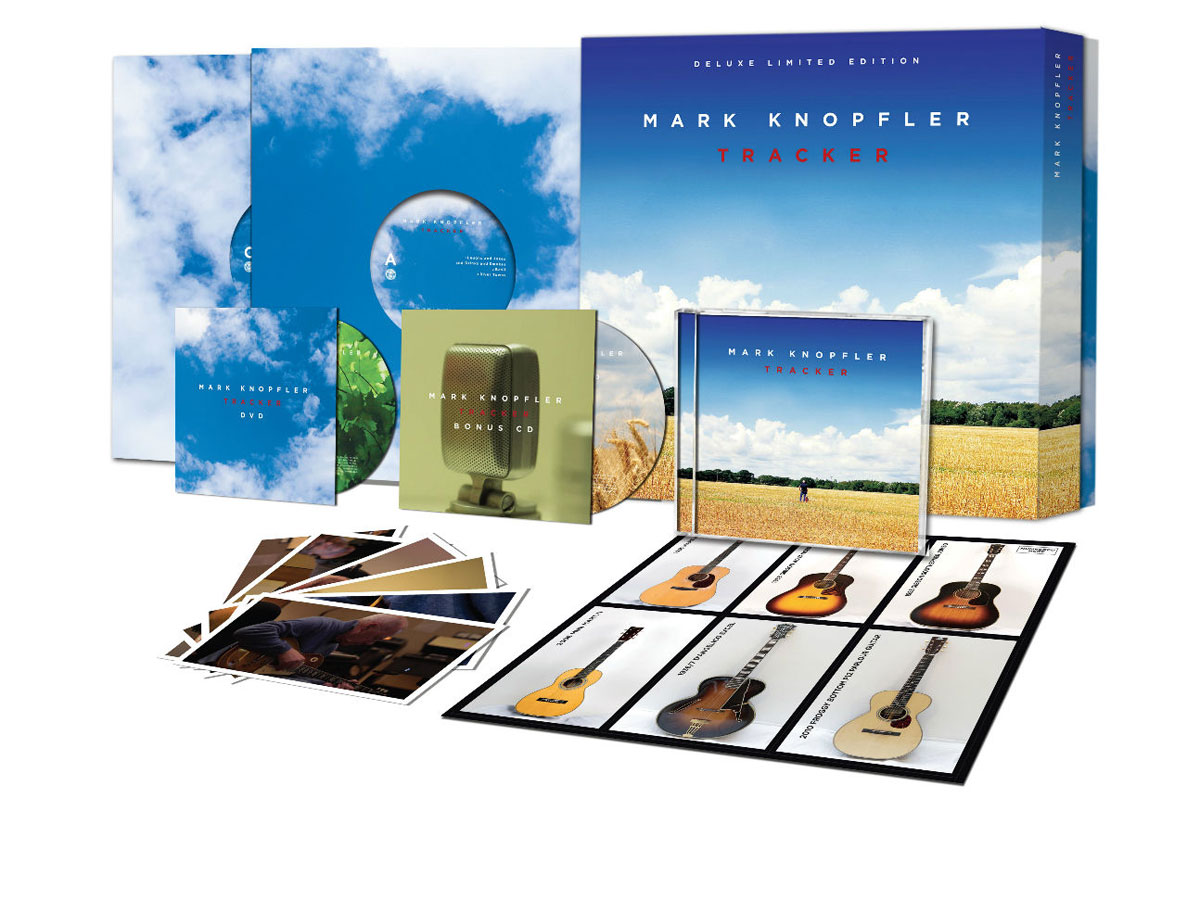
Introduction
Mark Knopfler and his guitar tech Glenn Saggers give us a guided tour of some of the instruments featured on ninth solo album Tracker.
“The setup of individual guitars depends on what we’re doing,” explains Glenn, who’s been Mark Knopfler’s tech for nearly 20 years.
“If he’s a semitone down, for example, we go up a gauge on the strings, or half a set depending how it is. Basically, all the acoustics are 0.012 gauge, the Nationals are 0.013, because they’re tuned down, and everything else is 0.010 gauge in standard tuning. But that’s about it really - specific guitars for specific jobs.
Decisions decisions
"Mark decides he wants something a certain way and he relays it to me and, ultimately, he makes the decisions about what sounds best, and it’s always song-driven.
"The guitars generally don’t need much maintenance while they’re in the studio because the building’s so well designed. The only thing that really needs doing from time to time, because we also use these live, is that we have to clear out the pots. We very rarely have to tweak anything.
“In terms of Strats, he mainly uses his signature model for everything that’s not slide-related. Then we have a ’64 Strat that’s set up specifically for a couple of [open-tuning] songs he does. Those are the only two Strats we take out, plus the Pensas, a couple of Groshes and the Les Paul."
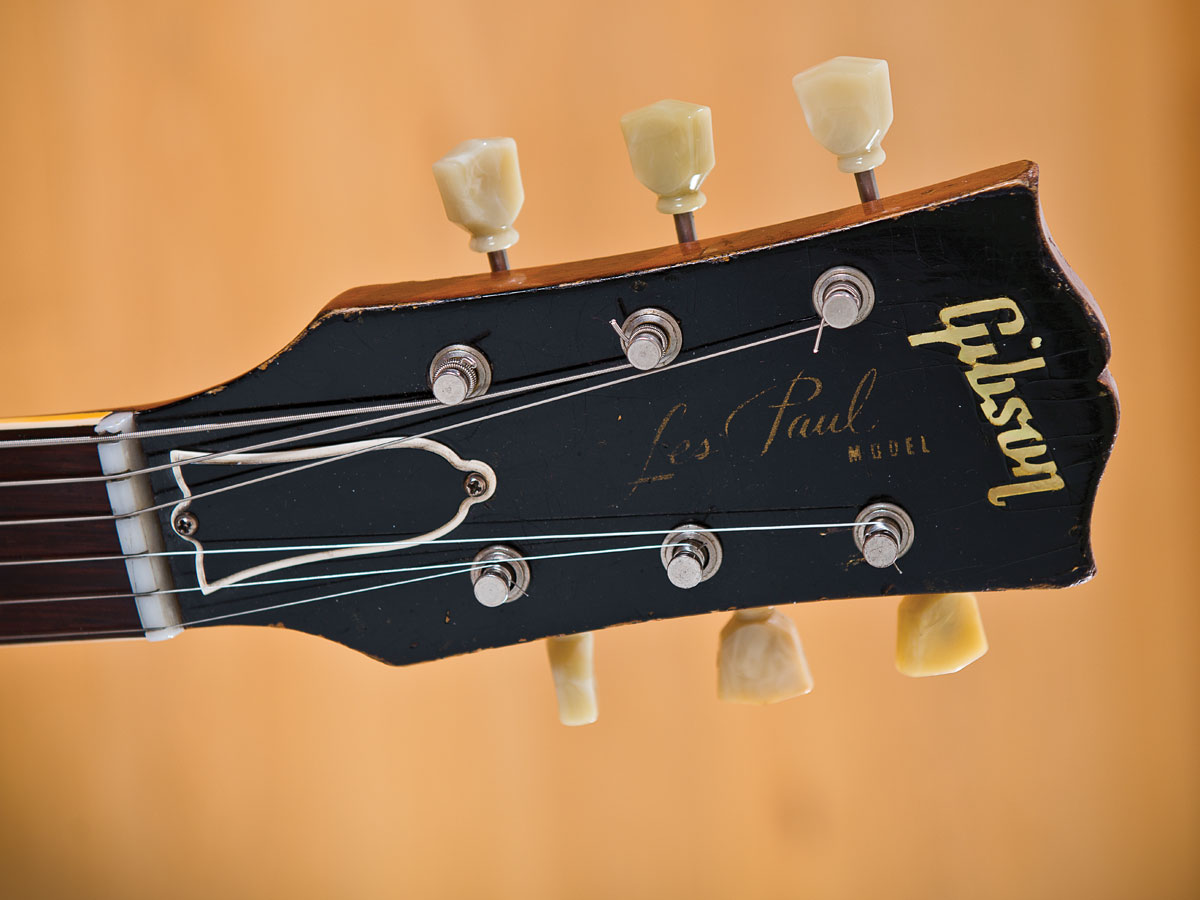
1958 Gibson Les Paul headstock
Tuning stability on Mark's Les Paul is surprisingly stable.
"I don’t know what it is about Les Pauls from that era but, on stage, I’ve never had to touch a single tuner on the ’58. Ever. It’s had plenty of time to settle”
"The tuning pegs are new," adds Glenn. "Because the old ones were about to disintegrate, so we took those off and replaced them. We still have them, they’re just not on the guitar.
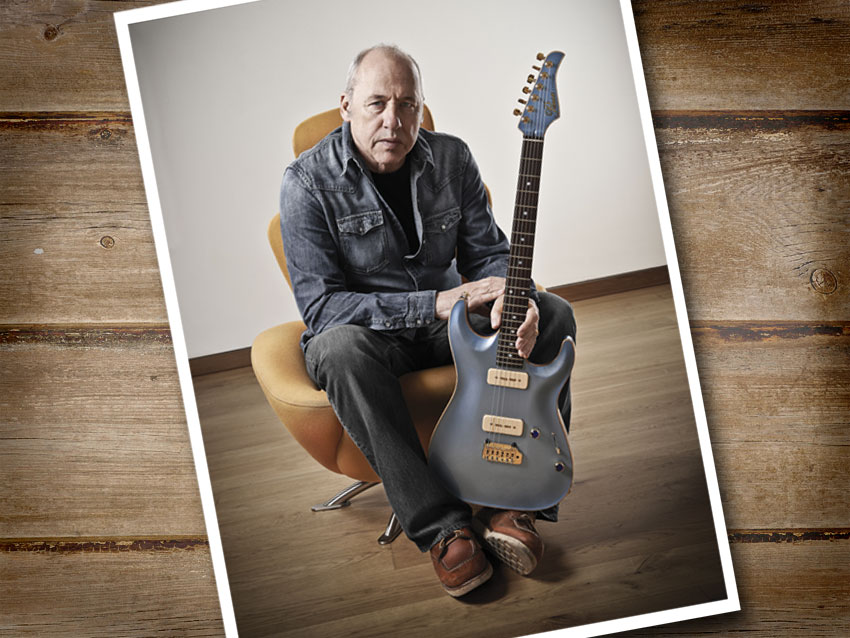
Pensa Blue
The Pensa ‘Blue’ (pictured) is the latest guitar to be made for Mark by Rudy Pensa, who owns the famous New York guitar emporium Rudy’s Music.
Mark calls the Pensa Blue, which features a maple cap on a conventional S-type body, a “mighty, mighty guitar”, which is in regular studio and live use.
The first instrument of this type, dubbed the Pensa-Suhr MK-1, was made for Mark in 1980 as a means of combining the power of a Les Paul with the comfort and playability of a Strat. This example is much more recent, as Knopfler’s tech Glenn Saggers explains:
“Rudy has a dating system that he inscribes on the back [of the neckplate]. This one’s from 14 December 2011. This is one of the best, although there’s been a few over the years.”

Martin D-18
"I tend to play the old Martin D-18 quite a lot, which a friend very generously gave me,” Mark says of his go-to acoustic.
“It’s a mid-30s Martin with a very dry, slate-y kind of sound. Beautiful guitar. But I’ve also been playing two other acoustics at home, which are both beautiful guitars, just to get them played in a little bit.
"One of them is a Froggy Bottom parlour guitar, which is a beautiful thing that was given to me by somebody very generous, and the other one is a Stefan Sobell flat-top guitar. It’s a beautiful guitar and you’re conscious that to be worthy of a thing like that you’ve got to play it.
"So I pick that up and try and play it a little bit. It’s like getting a guitar from John Monteleone or something. You’ve got to play it in to try to bring it on, which is what I’ll try to do every now and again. But they’re all so beautiful”
Jamie Dickson is Editor-in-Chief of Guitarist magazine, Britain's best-selling and longest-running monthly for guitar players. He started his career at the Daily Telegraph in London, where his first assignment was interviewing blue-eyed soul legend Robert Palmer, going on to become a full-time author on music, writing for benchmark references such as 1001 Albums You Must Hear Before You Die and Dorling Kindersley's How To Play Guitar Step By Step. He joined Guitarist in 2011 and since then it has been his privilege to interview everyone from B.B. King to St. Vincent for Guitarist's readers, while sharing insights into scores of historic guitars, from Rory Gallagher's '61 Strat to the first Martin D-28 ever made.
